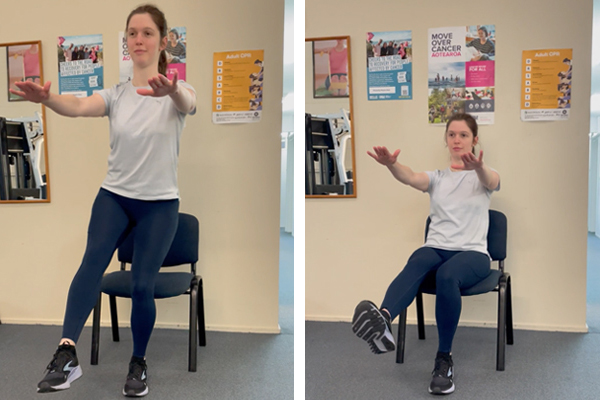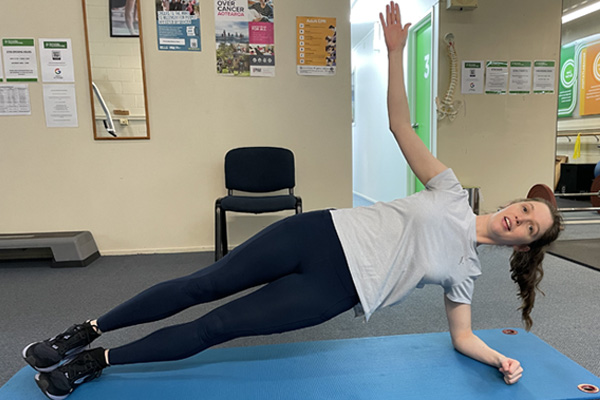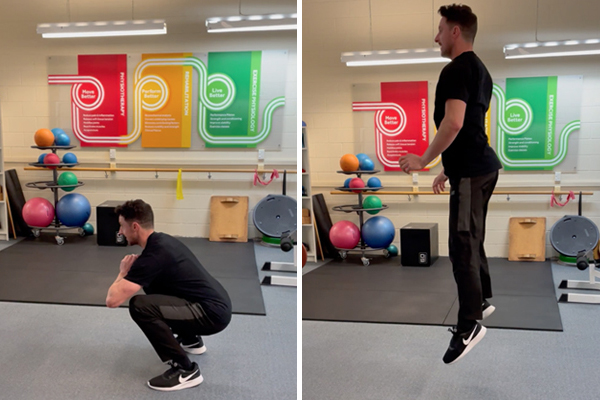Most of us don’t get to ski as much as we would like, which means the body is thrown into a new movement for a lot of hours at a time. As the muscles fatigue, skiing gets harder, the chance of having a fall goes up, and the ability of the muscles to support the fall goes down.
To learn more about different ski injuries and injury prevention check out our recent article called ‘Get Ready for Skiing’. It explains the importance of improving muscle strength to prevent injuries when you’re out on the snow. Putting thought and effort into preparing your body for skiing is going to be one of the key ways to make any upcoming skiing more enjoyable and hopefully injury free.
Below I outline some suggested skiing exercises to get started with your strength and conditioning at home, even if you only have a few minutes.
3 primary areas of focus
There are 3 main components to an exercise programme for skiing – leg strength, core strength, and dynamic balance (see ‘Get Ready for Skiing‘ for more detail). Each play an important part in skiing well and injury prevention.
Below are some exercise suggestions translating these three components into a programme. I have selected exercises that can be completed at home and will be generally challenging but achievable for most skiers. Of course, there is a lot of variation in personal circumstances and so many modified versions of these exercises exist. If they are not feeling right feel welcome to adapt them to your needs or come into the clinic for a more personalised programme. I have included some brief instructions and explanations, but all exercises are easily searchable for a more in-depth tutorial.
1. Single leg sit to stand from chair:

Start standing by a chair, couch or box like you are going to sit down into it. Lift one leg from the ground and hold it out in front of you. Lower down into the chair on the single leg, the same movement as if you are sitting down into it, keeping the hips square to the front and knee in line with toes. Control the movement as much as possible and sit down into the chair. You may want to start with just this component, focusing on improving the control through your hip and knee. When you are ready you can also try standing up out of the chair with the same movement, while trying to avoid twisting through the hip and knee. While challenging at first you will be surprised at how quickly your hip and knee control improves and how much stronger you feel through the movement.
Other variations of this movement you can try are: Lateral step downs (easier), Romanian split squat or pistol squat (harder).
2. Side Plank:

Start lying on your side on the floor. Line up your head, shoulders, hips and feet. Place your elbow directly below your shoulder with your forearm flat on the floor. To start, push your hips away from the floor so only your forearm and feet are contacting the ground, make sure you are keeping your body in a ‘plank’ shape with shoulders, hips and feet in a straight line. Keep the hips high and in line, you should feel this working in the side of your core, hip and down the side of your leg. Hold for as long as you can maintain form, then change sides.
Other variations: Half side plank (easier), side plank with hip abduction (harder).
3. Jump Squats:

Start by squatting as you normally would, then power up out of the squat transitioning directly into a jump. Land the jump focusing on landing lightly and smoothly sinking into your next squat as you absorb the force. Also focus on landing and pushing evenly between both legs. This will be a big step up from normal squatting so take your time and focus on quality over quantity.
Other variations: skipping/jumping (easier) deficit jumps/single leg hops off a step (harder).
Generally, to get improvement you need to be doing 3 sets of 5-12 reps of these exercises 3-4 times per week. The key is that you should be feeling tired by the end of each set and be doing it often enough that the body will adapt. The advantage of these exercises is that they are easy to get done quickly and with a bit of planning can be incorporated into your day or pre-existing workout.
For additional support, along with an exercise programme personalised to you, book in with your physio here at Ponsonby Physio.
Happy Skiing!




